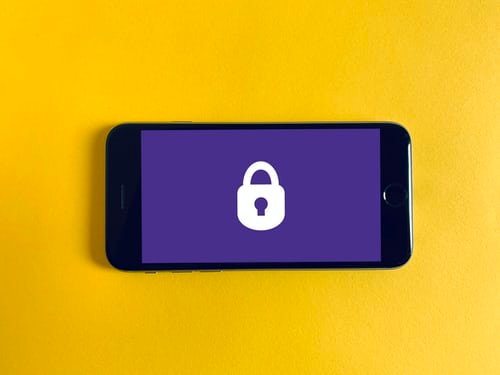By Jim Talerico,
Businesses rebuilding after the recent Covid-19 crisis must know their obligations to keep people safe and mitigate any legal risks associated with this crisis. Here is how to create a Covid-19 reopening plan — the steps needed to keep people safe, and some potential legal issues to avoid.
The main concerns when crafting a pandemic-related reopening plan include: (a) individual & facility hygiene and cleanliness, (b) screening & testing, (c) social distancing & response protocols for infections, and (d) guidance on other pandemic-related issues, such as sick pay, leave policies, “employee concern reporting,” and “accommodation request procedures.”
Business owners should start by consulting four different government sources: (i) the Center For Disease Control (CDC,) the nation’s health protection agency, (ii) federal, state, and local reopening orders, (iii) OSHA regulations, and (iv) other relevant sources, like state health agencies and industry resources.
The best place to start for advice about hygiene and cleanliness is the CDC’s web site, which provides detailed information about cleanliness guidelines for both individuals and facilities. For instance, the CDC recommends stocking effective cleaning agents & supplies, and offers instructions for surface cleaning techniques, in addition to signage and other forms of communications to remind individuals of basic preventive infection measures, like face covering, frequent hand washing, respiratory etiquette, and social distancing. Social distancing solutions can actually include a myriad of options, such as teleworking, virtual meetings, modified work schedules, staggered shifts & break times, and limited access to communal spaces. The CDC’s also outlines industry specific guidelines about workplace hygiene and cleanliness, which you should review for your industry.
The second concern involves health screenings and Covid-19 testing. Screening & testing approaches vary based on government orders, the industry in which you operate, as well as the type of employee, but can include written questionnaires, temperature checks, actual Covid-19 testing or some combination thereof. The three important health screening & testing issues that business owners should be mindful of are: (i) protecting employee medical records, (ii) confidentiality, and (iii) the need to possibly accommodate employees during this crisis.
The EEOC has deemed taking temperatures appropriate during a pandemic but requires the method to be both reliable and accurate. The CDC testing threshold is 100.4 Fahrenheit. The EEOC also permits Covid-19 testing, so long as it is reliable, accurate and follows FDA guidance, which can be found on the Internet.
When crafting a Covid-19 response plan, businesses must, furthermore, create a procedure for: (a) reporting an employee illness and (b) dealing with a suspected or confirmed case of Covid-19 in the workplace. Important parts of these two procedures include: (i) isolation and removal from the workplace, (ii) working from home, (iii) a definition of paid and unpaid leave, (iv) contract tracing (which defines “close contact” as six feet,) (v) sanitation, (vi) cleanliness, (vii) confidentiality, and (viii) steps for returning to work. Again, there is a lot of good information on the Internet to guide you in creating a procedure for reporting and dealing with workplace Covid-19 illnesses.
As mentioned above, the CDC’s cleaning practices recommend EPA-approved disinfection products, procedures for cleaning surfaces, and routine individual cleaning practices. The CDC’s ventilation practices focus on improved air filtration and outdoor ventilation, ensuring that ventilation systems operate properly, and providing acceptable indoor air quality for a facility’s space and occupancy levels.
The CDC’s guidance for returning to work includes both “symptoms” and “testing” based strategies. “Symptoms-based” strategies prohibit employees from returning to work until: (a) at least 72 hours, or three days, have passed since recovery, defined as resolution of fever without the use of fever-reducing medications, and improvement in respiratory symptoms, like coughing and shortness of breath, and (b) at least ten days have passed since symptoms have appeared. The three “test-based” strategies for returning to work are resolution of fever without the use of fever reducing medications, improvement in respiratory symptoms, and negative results of an FDA approved Covid-19 test.
OSHA’s guidance on preparing a workplace for Covid-19 includes recommended safety measures “based on the criteria for assessing a worker’s level of risk and the worker’s actual level of risk.” According to OSHA’s “General Duty Clause,” employers are required to provide their employees with a workplace free from recognized hazards likely to cause death or serious physical harm. OSHA guidelines for Covid-19 further require assessing the hazards to which workers may be exposed, evaluating the level of risk exposure, and selecting & implementing needed controls to prevent exposure.
Knowing how to respond if an employee is afraid to return to work is another Covid-19 reopening topic that must be handled properly. An employer cannot discriminate against, or discipline, an employee who refuses in good faith to expose him or herself to dangerous conditions in the work environment when the employee feels there is no alternative but to avoid that environment. Before a business can consider the employee’s actions job abandonment or a voluntary resignation, the business is obligated to “actively listen” to the employee and make reasonable accommodations, if the employee’s claim is legitimate. Teleworking, additional PPE, moving the workspace, staggering work times, restructuring non-essential work duties, and/or offering personal time off, sick leave, and leaves of absence are all reasonable accommodations. Most times, if the two sides hear each other out, a mutually acceptable solution can be reached.
The Families First Coronavirus Response Act (FFCRA) which took effect on April 1st and is good through the end of the year applies to all government employers and both for profit & non-profit businesses with 500 employees or fewer. (First responders and healthcare providers are exempt from the act, as are employers with fewer than 50 employees.) The FFCRA expands unemployment coverage with employer notice and requires covered employers to offer “qualified” sick leave and paid family leave, for which there is an employer tax credit in 2020. State laws regarding sick pay and leave can differ, so know your state’s laws.
“Qualified” reasons for paid sick and leave pay include employees who are unable to work, or telework, because:
- The employee is subject to federal, state, or local quarantine or isolation Covid-19 orders;
- The employee has been ordered by a health care provider to self-quarantine due to Covid-19 related concerns;
- The employee is seeking a diagnosis for Covid-19 symptoms;
- The employee is caring for an individual subject to a federal, state, or local self-quarantine order, or who has been advised to self-quarantine;
- The employee is caring for a child whose school or place of care has been closed, or whose childcare provider is unavailable due to Covid-19; and
- Any employee experiencing a “substantially similar condition” specified by the Secretary of Health & Human Services, Secretary of Labor, or Secretary of the Treasury.
Per the FFCRA, full-time employees are entitled to 80 hours of pay, and part-time employees the average number of hours an employee works in a two-week period. The rate of pay can be either the employee’s regular pay up to $511.00 per day and $5,110.00 in total, if they meet the first three qualifying reasons above, or 2/3rd’s pay up to $200 per day ($2,000 in total,) if they meet the last three qualified reasons listed above.
If an employee is caring for a child whose school or place of care has been closed, or whose childcare provider is unavailable due to Covid-19, this is considered “job protected status,” so long as the employee has worked for 30 calendar days. The previously mentioned employee is eligible for up to 10 weeks of pay at 2/3rd’s pay, up to $200 per day or $10,000 in aggregate. If the FFCRA does not apply, however, the first 10 days would be unpaid.
For higher risk employees, employers are obligated to offer “reasonable accommodation.” Reasonable accommodations can include: continued telework, additional or alternative PPE, moving the workspace, staggering shifts, temporarily restructuring non-essential duties, and/or unpaid leave, so long as it does not create an undue hardship.
Employees have the right to complain about conditions they reasonably believe are unsafe. Actions taken against employees who complain can be deemed retaliation, which can result in wages and hour complaints, FFCRA, FLMA, Americans with Disability Act, age discrimination, and OSHA violations, worker’s compensation claims and possible union organizing efforts.
Given the risks. performing your due diligence prior to reopening is important. Because we are not yet out of the woods regarding Covid-19, business owners should monitor the news and Internet for new developments and updates. For more information, about properly reopening after Covid-19, consult these websites:
- The CDC Guidance for Businesses and Workplaces:
https://www.cdc.gov/coronavirus/2019
- The Equal Employment Opportunity Commission (EEOC:) https://eeoc.gov/coronavirus/
- The White House: www.whitehouse.gov/openingamerica/
- OSHA Coronavirus Guidance: www.OSHA.gov/SLTC/covid-19/www.congress.gov
- The U.S. Department of Labor: https:/www.dol.gov/agencies/whd/pandemic
Business owners are, furthermore, strongly encouraged to also consult with their attorney, CPA, insurance agent, and other advisors.
Our Small Business Owner’s Covid-19 Survival Kit is available through our on-line store on my Square web site https://greater-prairie-business-consulting.square.site/.
It contains over two dozen files filled with a plethora of financial, tax, HR, safety, leadership, sales, marketing, and government information to help business owners survive the Covid-19 Coronavirus Crisis.
We offer a 100% Money Back Guarantee if you are not completely satisfied !

James J. Talerico, Jr., CMC ©
About the Author
A nationally recognized small to mid-sized business (SMB) expert, Jim Talerico has consistently ranked among the “top small business consultants followed on Twitter.” With more than thirty – (30) years of diversified business experience, Jim has a solid track record helping thousands of business owners across the US and in Canada tackle tough business problems and improve their organizational performance.
A regular guest on the Price of Business on Bloomberg Talk Radio, Jim’s client success stories have been highlighted in the Wall St Journal, Dallas Business Journal, Chicago Daily Herald, and on MSNBC’s Your Business, and he is regularly quoted in publications like the New York Times, Dallas Morning News, Philadelphia Inquirer, and on INC.com, in addition to numerous, other industry publications, radio broadcasts, business books, and Internet media.
Jim Talerico is a certified management consultant CMC©, an honor bestowed on only 1% of all consultants
worldwide. He is also the founder and CEO of Greater Prairie Business Consulting, Inc.
For more information about Greater Prairie Business Consulting, Inc., go to:
www.greaterprairiebusinessconsulting.com.)
Increase your knowledge of the latest small to mid-sized business (SMB) trends by tuning into Jim’s regular appearances on the Price of Business !
Social Media Links:
www.LinkedIn.com/in/JamesJTalericoJr www.Twitter.com/JamesJTalericoJ
www.Facebook.com/search/top/q=small%20business%20expert&epa=SEARCH_BOX www.Instagram/James_J_Talerico_Small_Business _Expert






